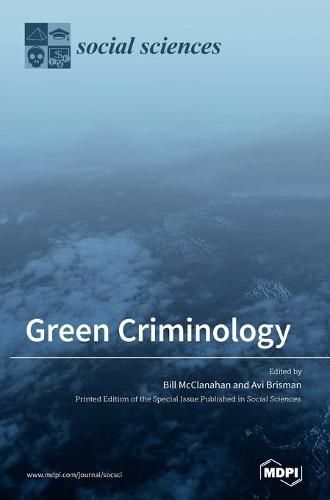Readings Newsletter
Become a Readings Member to make your shopping experience even easier.
Sign in or sign up for free!
You’re not far away from qualifying for FREE standard shipping within Australia
You’ve qualified for FREE standard shipping within Australia
The cart is loading…






This title is printed to order. This book may have been self-published. If so, we cannot guarantee the quality of the content. In the main most books will have gone through the editing process however some may not. We therefore suggest that you be aware of this before ordering this book. If in doubt check either the author or publisher’s details as we are unable to accept any returns unless they are faulty. Please contact us if you have any questions.
In the past three decades, a stream of criminological inquiry has emerged which explores, measures, and theorizes crimes and harms to the environment at the micro-, mezzo-, and macro-levels. This green criminology , as it has come to be known, has widened the criminological gaze to consider crimes and harms committed against air, land (from forests to wetlands), nonhuman animals, and water in local, regional, national, and international areas or arenas. Accordingly, green criminology has endeavored to understand the causes and consequences of air and water pollution, biodiversity loss, climate change, corporate environmental crime (e.g., illegal waste disposal), food production and distribution, resource extraction and exploitation, and wildlife trade and trafficking, while also exploring potential responses to these issues. This book seeks to introduce the green criminological perspective to a broader social science audience. Recognizing that green criminology is not the first social science to explore the phenomena and harms at the intersections of humanity and ecology, this book offers an introduction to some of the unique insights developed over nearly 30 years of green criminological thought and scholarship to students, professors, researchers, and practitioners working in the fields of anthropology, economics, environmental humanities, environmental sociology, geography, history, and political ecology. This book contains contributions from researchers in green criminology from around the world, including early- and mid-career scholars, as well as more established voices in the field-all of whom are dedicated to exposing, understanding, and ultimately hoping to thwart further environmental degradation and despoliation.
$9.00 standard shipping within Australia
FREE standard shipping within Australia for orders over $100.00
Express & International shipping calculated at checkout
This title is printed to order. This book may have been self-published. If so, we cannot guarantee the quality of the content. In the main most books will have gone through the editing process however some may not. We therefore suggest that you be aware of this before ordering this book. If in doubt check either the author or publisher’s details as we are unable to accept any returns unless they are faulty. Please contact us if you have any questions.
In the past three decades, a stream of criminological inquiry has emerged which explores, measures, and theorizes crimes and harms to the environment at the micro-, mezzo-, and macro-levels. This green criminology , as it has come to be known, has widened the criminological gaze to consider crimes and harms committed against air, land (from forests to wetlands), nonhuman animals, and water in local, regional, national, and international areas or arenas. Accordingly, green criminology has endeavored to understand the causes and consequences of air and water pollution, biodiversity loss, climate change, corporate environmental crime (e.g., illegal waste disposal), food production and distribution, resource extraction and exploitation, and wildlife trade and trafficking, while also exploring potential responses to these issues. This book seeks to introduce the green criminological perspective to a broader social science audience. Recognizing that green criminology is not the first social science to explore the phenomena and harms at the intersections of humanity and ecology, this book offers an introduction to some of the unique insights developed over nearly 30 years of green criminological thought and scholarship to students, professors, researchers, and practitioners working in the fields of anthropology, economics, environmental humanities, environmental sociology, geography, history, and political ecology. This book contains contributions from researchers in green criminology from around the world, including early- and mid-career scholars, as well as more established voices in the field-all of whom are dedicated to exposing, understanding, and ultimately hoping to thwart further environmental degradation and despoliation.